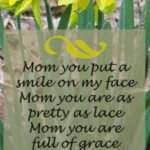Non rhyming poetry is meant to be a type of poetry that doesn’t try to rhyme. Rhyming poetry is poetry where an effort is made to achieve rhymes within the structure, or more formalised make up of the poem.
Free verse is a form of non rhyming poetry that has become more popular during our recent history, but it has actually been around for many hundreds of years. This is a form of poetry in which it is all completely left up to the writer, because it has no formal structure or rules for the poem to follow. It need not rhyme, or flow, or even follow a rhythmical pattern. The words are individually chosen for their effect and carefully arranged into verses, or shorter stanzas and other meaningful word clusters. This is what separates it from being only plain prose.
Free verse is only one form of non rhyming poetry though.
In other forms of non rhyming poetry there often doesn’t need to be a strict separation between the two forms either though, and within the right context you can slip a rhyme or two into your non rhyming poem, as well. The more important factor in non rhyming poems is in the rhythm or the beat of the poem, and in the writer creating some vivid imagery for the heart and mind to see, rather than it getting attracted by only the cleverness of the rhymes.
When writing rhyming poetry I often make use of a rhyming dictionary, but when writing non rhyming poetry a thesaurus is probably more useful. Write your poem and let it all flow out of you first, and then if a word rhymes where it shouldn’t be rhyming and because your mind just couldn’t resist throwing in a rhyme, well you can replace it with another similar meaning word from your thesaurus, but only if it still fits within the overall context of your poem.
Rhyming is only one aspect of poetry.
Other aspects or poetical devices that can be utilised in a poem include making better use of the sounds of words, or creating a sort of pattern in the use of the words. For example creating a repetitive pattern, or establishing a certain arrangement of syllables, or sticking to words all of a certain length within a line. It might sound very much like a song or a tuneful ditty, all now with its still flowing cadence, or with its overall lyrical quality to it.
There are many more different aspects to poetry, and some that you might try to develop more within your non rhyming poetry. These particular extra aspects might actually be being restricted in your rhyming poem by the very effort needed to try to find a rhyming word to match with some other word that rhymes already somewhere within your poem. The imagery and focus might be lessened by the stilting of your poetry towards only utilising and enforcing the us of only certain rhyming words. You are nearly always restricted in the range of words that you can use that actually do rhyme.
There are many different types of rhymes however. Some rhymes are true or perfect rhymes, and others are false or partial rhymes which are sometimes referred to as imperfect or half rhymes.
The use of sensory words, of other thought provoking words and of these more powerful words begin to paint a vivid picture in the readers eyes that can bring a whole new dimension and focus point to your poems. The phrasing, the paragraphing, the use of syllables, all can help to create a certain effect on the reader. You can evoke a whole new feeling, in a much deeper way when the focus is being now shifted away from only writing in a way that rhymes.
Non rhyming poetry is also known as free verse, and as this word implies you are relatively free now to write your poem in which ever way you like. Non rhyming poetry can sometimes express the idea of what you are wanting to say in a better way than what it could say it by using only rhyming words.
That said though, one form of poetry is not really ever any better than another. It really all only comes down to personal preference I guess and which remains at the heart of it all.
When writing poetry from an inspired flowing of thought forms, it is better to just let it flow and to keep writing, and not to worry too much about finding the exact right words as yet in the beginning stages of your writing, whether they be either rhyming or non rhyming.
Once the rough outline is penned, quality poetry, whether it is non rhyming or rhyming, takes considerable skill and some experienced knowledge of some of the tools of poetry to create a great poem from your still raw and untutored largely self taught humble beginnings.
Instead of using a good rhyming dictionary, you might turn to your thesaurus to substitute a word for an even more powerfully stimulating word, or you might use two or more words of the same meaning linked together to accentuate and build the power to a crescendo of loudness so that the reader cannot miss the point that you are making at this crucial stage of your poem. It really does all start to come together like a piece of music for you and for the reader.
A lot of poetry is written to fill a pattern, or a certain form. They have a certain beat or rhythm or word limit or syllable arrangement that must be met within the writing in some way. Free verse poetry has no restrictions whatsoever. Flow and word impact are still important though to give the writing the right feeling of still being a work of poetry.
Poetry should be all about putting your thoughts into words. After you have already done this, only then is the proper time to now worry about the form and structure of your poetry. Leave the details until afterwards, get the creativeness completed first.
There is a term used in poetry called meter, and which refers to the way in which the syllables are arranged within the poem. They can either be stressed or unstressed, and the lines within the poetry can be arranged to be of a similar or a set length of words or syllables.
There are a lot of differing patterns that we can follow or adhere to when writing our poetry. We can only follow them though when we know about them. To write good poetry then, it is a good idea to read some good poetry, and to study a bit more about the technical side of putting your poems together.
Increasing our knowledge base always helps us in whatever we are doing or pursuing in our lives, and poetry is no exception to this rule.
Here’s an example of some non rhyming free verse that I just penned now rather quickly:
Growing to be yourself is like no other growth.
Love grows in you as much as you grow in it.
What is love, what does it mean to grow in love?
Love is growth, when growth in love is still growing.
I am trying to show here that love is central to our growth as spiritual beings and as humans as well. On the other hand our growth also enables love to experience itself and to grow within itself as well. The only love is one that grows, and all real growth involves love. This is my message that I am trying to convey here in this short verse.
If I was to change it into rhyming poetry it might end up something more like this:
Growing to be yourself in you is through love’s debut.
Love is like no other growth in you to be true & to accrue.
Love grows in you, as much as you grow in it, it to emit.
All while still being true all through to your own bit of it.
What is love? What is growth?
Both are only in love to witness.
Love is growth, when growth is love,
now all grown to fit your fitness.
It grew a bit longer, and that’s all right as long as it still fits itself all nicely together within your poem.
To prefer one form of poetry over another is largely a matter of personal likes and choice.
Sometimes however, a poem can seem to be being forced into rhyming, and sometimes a rhyme can destroy the natural feel and rhythm being built up so far in the poem. The rhyme shuts down the natural cadence or tune that is being played by the poem, while at other times though, the rhymes are so very cleverly matched and can add something extra special to the poem.
I myself think that I personally prefer to allow for a few rhymes in my poems, as for me they help the poem to feel more like a poem, at least for me anyway. I grew up learning this old rhyming poem at primary school when I was ten years old.
At least a rhyming poem is also much easier I think to remember if this one is any such example, because it has stuck with me in my mind over all of these many years until now, and which is now more than forty very long years later.
There’s a bear down there.
A big brown bear.
It’s as big as four of me,
but it has to sit,
in that great big pit.
Poor bear!
The image of that poor old brown bear stuck down in its dungy dark and damp old crusty concrete pit is still invoked in me even now as I reread this poem, with a tinge of sadness and some very real feelings of connection to that poor old bear. That’s what good poetry is all about, to convey thoughts like this and to construct a picture of what is being depicted in the poem into the mind of the reader.
You can do this in differing ways whether you use rhyming or non rhyming poetry. It all really only ever boils down to the skills of the poet, I think. By all means then try your hand at some non rhyming poetry, it’s not as hard as you might think.
The beauty of this type of poetry is in its multiple meanings and enormous infinite possibility of interpretation open to the reader. The writer can leave it more open to interpretation, even purposely creating ambiguity within their poem.
They have a complete license to even adjust grammar where necessary to subtly create these extended shades of meaning within the beauty of their poem.
Rhymes can be beautiful forms of poetry, but so can non rhymes, and as I said above it all comes back to the power and skills and experience of the writer, and perhaps too, to his or her love of poetry.
Poetry is a great deal of joy and pain and wonder, with just a dash of the dictionary.
~Kahlil Gibran, (1883 to 1931) Lebanese poet and author.




